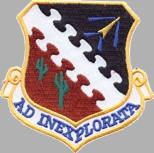
NF-104A "G-762" ready for a flight F-104A, construction number 183-1050, model 183-93-02, US serial number 56-0762, built by Lockheed Lockheed test flight June 27, 1958; available July 8, 1957; accepted July 29, 1957; delivery date August 1, 1957, ARDC (1957) December 13, 1958 at NAS Point Mugu, CA. F-104A 56-0762 piloted by Lt. Einar K. Envoldson of the 538th Fighter Interceptor Squadron at Larson AFB, WA. established a new time-to-climb record, reaching 25.000 meter (82,020.8 feet) in 4 minutes 26.03 seconds 1963 ARPS: Aerospace Research Pilot School (USAF TPS); July 9, 1963 pilot Jack Woodman flew this aircraft (still as F-104A) to Lockheed for the conversion to a NF-104. On July 24, 1963 it rolled out as first NF-104A. In August it was tested by Lockheed Company at Palmdale and it was handed over to the ARPS at Edwards in September; assigned to AFSC/TPS in October 1963 crashed December 10, 1963 near Edwards AFB after zoom climb to over 101,600 feet and entering a spin due to frozen stabilizer, pilot Chuck Yeager ejected with minor injuries (J79-GE-3B engine and Rocket dyne LR121/AR2-NA-1 rocket), written off. On the morning of December 10, 1963, ARPS commandant Col. Charles E. "Chuck" Yeager made two flights in preparation for an altitude record attempt. In the morning he flew NF-104A (56-0760) up to 108,000 feet. After lunch, he took 56-0762 up for another zoom flight. Yeager climbed to 35,000 feet about 100 miles from Edwards near the southern end of the San Joaquin Valley, and headed for the base in afterburner. Yeager ignited the rocket as he was climbing at a steep angle, passing through 60,000 feet with the jet engine flamed out from oxygen starvation. The NF-104A went over the top of its ballistic arc at 101,600 feet. Yeager had planned to re-ignite his jet engine at about 40,000 feet in a dive, but as the angle of attack reached 28 degrees the nose pitched up. The RCS thrusters had no effect, and the aircraft soon entered a flat spin. Without airflow into the jet intakes, Yeager could not restart the engine. He attempted to drop the nose by deploying the drag chute at an altitude of 17,000 feet, but after the chute was released the nose pitched up again. The aircraft continued to spin towards the desert floor. After a total of 13 revolutions, Yeager ejected at 7,000 feet. A rocket charge blasted Yeager out of the aircraft and an automatic device separated him from his ejection seat. The ejection seat tumbled with him and became entangled in the parachute lines. As the chute deployed it dislodged the ejection seat, which then struck Yeager's faceplate. It smashed the Plexiglas and burning fuel from the ejector charge ignited the rubber helmet seal as the pure oxygen poured out. The aircraft impacted after the fourteenth revolution. Its smashed airframe blasted a hole in the desert several miles north of Mojave. The accident investigation found no sign of aircraft failure or systems malfunction. copyright © Airbus archive

